Eaton Transmission FRO-16210C Service Manual
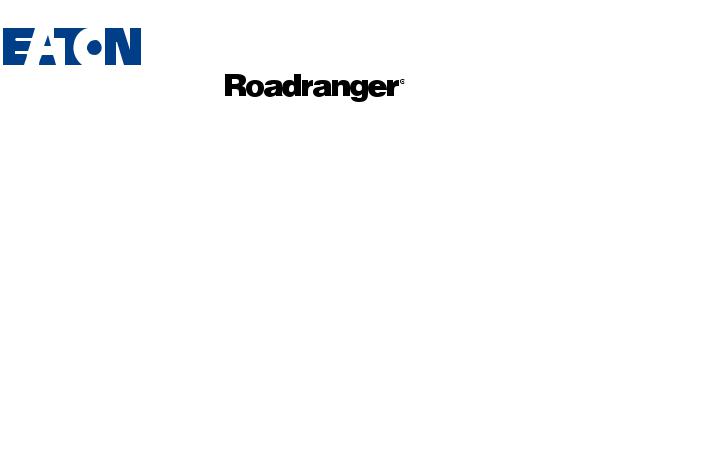
Fuller® Heavy-Duty FR/FRO Transmissions
More time on the road®
Service Manual
Fuller Heavy-Duty FR/FRO Transmissions
TRSM2400
January 2010
FR-11210B
FR-12210B
FR-13210B
FR-14210B
FR-15210B
FR-9210B
FRF-11210B
FRF-12210B
FRF-13210B
FRF-14210B
FRF-15210B
FRF-9210B
FRO-11210B
FRO-11210C
FRO-12210B
FRO-12210C
FRO-13210B
FRO-13210C
FRO-14210B
FRO-14210C FRO-15210B FRO-15210C FRO-16210B FRO-16210C FRO-17210C FRO-18210C FROF-11210B FROF-11210C FROF-12210B FROF-12210C FROF-13210B FROF-13210C FROF-14210B FROF-14210C FROF-15210B FROF-15210C FROF-16210B FROF-16210C
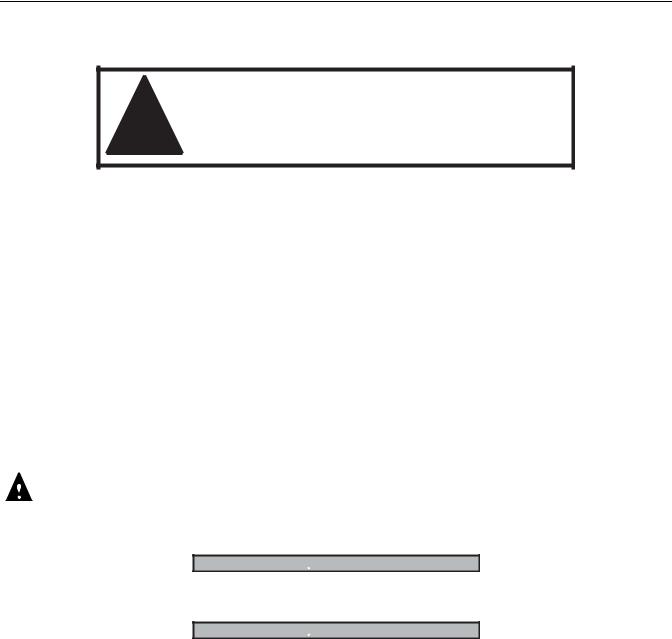
Warnings and Precautions
Warnings and Precautions
! WARNING
Before starting a vehicle always be seated in the driver’s seat, place the transmission in neutral, set the parking brakes and disengage the clutch.
Before working on a vehicle place the transmission in neutral, set the parking brakes and block the wheels.
Before towing the vehicle place the transmission in neutral, and lift the rear wheels off the ground, remove the axle shafts, or disconnect the driveline to avoid damage to the transmission during towing.
The description and specifications contained in this service publication are current at the time of printing.
Eaton Corporation reserves the right to discontinue or modify its models and/or procedures and to change specifications at any time without notice.
Any reference to brand name in this publication is made as an example of the types of tools and materials recommended for use and should not be considered an endorsement. Equivalents may be used.
This symbol is used throughout this manual to call attention to procedures where carelessness or failure to follow specific instructions may result in personal injury and/or component damage.
Departure from the instructions, choice of tools, materials and recommended parts mentioned in this publication may jeopardize the personal safety of the service technican or vehicle operator.
 WARNING
WARNING
Failure to follow indicated procedures creates a high risk of personal injury to the service technician.
 CAUTION
CAUTION
Failure to follow indicated procedures may cause component damage or malfunction.
Note: Additional service information not covered in the service procedures.
Tip: Helpful removal and installation procedures to aid in the service of this unit.
Always use genuine Eaton replacement parts.

Table of Contents
General Information |
|
Purpose and Scope of Manual .................................... |
1 |
Serial Tag Information and Model Nomenclature ........ |
5 |
Lubrication Specifications ........................................... |
8 |
Oil Leak Inspection Process ....................................... |
10 |
Transmission Operation ............................................ |
11 |
Tool Specifications .................................................... |
15 |
Torque Specifications ................................................ |
19 |
Power Flow Diagrams ............................................... |
21 |
Air System Troubleshooting ...................................... |
31 |
General Troubleshooting Chart ................................. |
42 |
Air System Overview ................................................. |
45 |
Timing Procedures .................................................... |
60 |
In-Vehicle Service Procedures
How to Disassemble the Roadranger Valve ............... |
62 |
How to Assemble the Roadranger Valve ................... |
64 |
How to Remove Compression Type Fittings .............. |
66 |
How to Install Compression Type Fittings ................. |
67 |
How to Remove Push-To-Connect Type Fittings ...... |
68 |
How to Install Push-To-Connect Type Fittings .......... |
69 |
How to Remove a Roadranger Valve ......................... |
70 |
How to Install a Roadranger Valve ............................ |
71 |
How to Remove the Gear Shift Lever/Remote |
|
Shift Control ....................................................... |
72 |
How to Install the Gear Shift Lever/Remote |
|
Shift Control ....................................................... |
73 |
How to Adjust the Remote Shift Control (LRC Type) . 74 |
|
How to Remove the Detent Spring ............................ |
76 |
How to Install the Detent Spring ............................... |
77 |
Neutral Switch Operation and Testing ....................... |
78 |
How to Remove the Neutral Switch ........................... |
79 |
How to Install the Neutral Switch .............................. |
80 |
Reverse Switch Operation and Testing ...................... |
81 |
How to Remove the Reverse Switch ......................... |
82 |
How to Install the Reverse Switch ............................. |
83 |
How to Install the Shift Bar Housing ......................... |
84 |
How to Remove the Shift Bar Housing ...................... |
85 |
Ho to Remove the Oil Seal Mechanical/Magnetic |
|
Speedometer ...................................................... |
86 |
How to Install the Oil Seal Mechanical/Magnetic |
|
Speedometer ...................................................... |
88 |
How to Remove the Auxiliary Section in Chassis ...... |
90 |
How to Install the Auxiliary Section in Chassis .......... |
92 |
How to Disassemble the Integral Oil Cooler .............. |
96 |
How to Assemble the Integral Oil Cooler ................... |
98 |
How to Remove the Air Module ................................ |
99 |
How to Install the Air Module .................................. |
101 |
Transmission Overhaul |
|
Procedures-Bench Service |
|
How to Disassemble the Gear Shift Lever ................ |
102 |
How to Assemble the Gear Shift Lever .................... |
104 |
How to Remove the Shift Bar Housing .................... |
106 |
How to Install the Shift Bar Housing ........................ |
107 |
How to Disassemble the Shift Bar Housing ............. |
108 |
How to Disassemble the Range Cylinder ................. |
111 |
How Assemble the Range Cylinder .......................... |
112 |
How to Assemble the Shift Bar Housing .................. |
114 |
How to Remove the Input Shaft Assembly |
|
(without main case disassembly) ..................... |
118 |
How to Install the Input Shaft Assembly |
|
(without main case disassembly) ..................... |
120 |
How to Remove the Auxiliary Section ...................... |
122 |
How to Disassemble the Auxiliary Section ............... |
124 |
How to Disassemble the Range Yoke ...................... |
127 |
How to Disassemble the Output Shaft ..................... |
128 |
How to Disassemble the Synchronizer Assembly .... |
129 |
How to Assemble the Synchronizer Assembly ......... |
130 |
How to Remove the Clutch Housing ........................ |
132 |
How to Assemble the Output Shaft .......................... |
133 |
How to Assemble the Range Yoke ........................... |
135 |
How to Disassemble the Auxiliary Countershaft ...... |
136 |
How to Remove the Auxiliary Countershaft |
|
Bearing Races .................................................. |
137 |
How to Install the Auxiliary Countershaft |
|
Bearing Races .................................................. |
138 |
How to Assemble the Auxiliary Countershaft ........... |
139 |
How to Remove the Auxiliary Drive |
|
Gear Assembly ................................................. |
140 |
How to Disassemble the Upper and Lower |
|
Reverse Idler Gear Assembly ............................ |
141 |
How to Remove the Upper and Lower |
|
Countershaft Bearings ...................................... |
144 |
How to Remove the Mainshaft Assembly ................ |
146 |
How to Remove the Countershaft Assemblies ......... |
149 |
How to Disassemble the |
|
Countershaft Assemblies .................................. |
151 |
How to Remove the Input Shaft and |
|
Main Drive Gear ................................................ |
153 |
How to Prepare the Main Case for Reassembly ....... |
155 |
How to Disassemble the Mainshaft Assembly ......... |
156 |
How to Assemble the Mainshaft Assembly with |
|
Non-Selective (Non-Adjustable) |
|
Tolerance Washers ........................................... |
158 |
How to Install the Mainshaft Assembly .................... |
161 |
How to Assemble the Countershaft Assemblies ....... |
163 |
How to Assemble the Lower Reverse Idler |
|
Gear Assembly ................................................. |
165 |
How to Install Countershaft Assemblies .................. |
167 |

Table of Contents
How to Install the Lower Countershaft Bearings ..... |
168 |
How to Install the Input Shaft and Main |
|
Drive Gear ........................................................ |
170 |
How to Install the Input Bearing Cover .................... |
172 |
How to Install the Upper Countershaft Bearings ..... |
173 |
How to Install the Upper Reverse Idler |
|
Gear Assembly ................................................. |
175 |
How to Install the Auxiliary Drive Gear Assembly .... |
177 |
How to Install the Clutch Housing ........................... |
178 |
How to Remove the Oil Pump ................................. |
180 |
How to Install the Oil Pump .................................... |
181 |
How to Install the Oil Seal ....................................... |
182 |
How to Assemble the Auxiliary Section ................... |
183 |
How to Install the Auxiliary Section ......................... |
187 |
Shim Procedure without a Shim Tool for |
|
Tapered Bearings ............................................ |
189 |

Introduction
Purpose and Scope of Manual
This manual is designed to provide information necessary to service and repair the Eaton Fuller transmissions listed on the front.
How to use this Manual
The service procedures have been divided into two sections: In-Vehicle Service Procedures and Transmission Overhaul Proce- dures—Bench Service. In-Vehicle Service Procedures contain procedures that can be performed while the transmission is still installed in the vehicle. Transmission Overhaul Procedures contain procedures that are performed after the transmission has been removed from the vehicle.
The procedure sections are laid out with a general heading at the top outside edge of each page followed by more specific headings and the procedures. To find the information you need in these sections, first go to the section that contains the procedure you need. Then look at the heading at the top and outside edge of each page until you find the one that contains the procedure you need.
Transmission Overhaul Procedures follow the general steps for complete disassembly and then assembly of the transmission.
Note: In some instances the transmission appearance may be different from the illustrations, but the procedure is the same.
Disassemble Precautions
It is assumed in the detailed assembly instructions that the lubricant has been drained from the transmission, the necessary linkage and vehicle air lines disconnected and the transmission has been removed from vehicle chassis. Removal of the gear shift lever housing assembly (or remote control assembly) is included in the detailed instructions (How to Remove the Gear Shift Lever). This assembly MUST be detached from the shift bar housing before the transmission can be removed.
Follow closely each procedure in the detailed instructions, make use of the text, illustrations, and photographs provided.
Assemblies
•When disassembling the various assemblies, such as the mainshaft, countershafts, and shift bar housing, lay all parts on a clean bench in the same sequence as removed. This procedure will simplify assembly and reduce the possibility of losing parts.
Bearings
•Carefully wash and lubricate all usable bearings as removed and protectively wrap until ready for use. Remove bearings planned to be reused with pullers designed for this purpose.
Cleanliness
•Provide a clean place to work. It is important that no dirt or foreign material enters the unit during repairs. Dirt is an abrasive and can damage bearings. It is always a good practice to clean the outside of the unit before starting the planned disassembly.
Input Shaft
•The input shaft can be removed from the transmission without removing the countershafts, mainshaft, or main drive gear. Special procedures are required and provided in this manual.
Snap Rings
•Remove snap rings with pliers designed for this purpose. Snap rings removed in this manner can be reused, if they are not sprung or loose.
Introduction
1

Introduction
When Using Tools to Move Parts
•Always apply force to shafts, housings, etc., with restraint. Movement of some parts is restricted. Never apply force to driven parts after they stop solidly. The use of soft hammers, soft bars, and mauls for all disassembly work is recommended.
Inspection Precautions
Before assembling the transmission, check each part carefully for abnormal or excessive wear and damage to determine reuse or replacement. When replacement is necessary, use only genuine Eaton® Fuller® Transmission parts to assure continued performance and extended life from your unit.
Since the cost of a new part is generally a small fraction of the total cost of downtime and labor, avoid reusing a questionable part which could lead to additional repairs and expense soon after assembly. To aid in determining the reuse or replacement of any transmission part, consideration should also be given to the unit's history, mileage, application, etc.
Recommended inspection procedures are provided in the following checklist.
Bearings
•Wash all bearings in clean solvent. Check balls, rollers, and raceways for pitting, discoloration, and spalled areas. Replace bearings that are pitted, discolored, spalled, or damaged during disassembly.
•Lubricate bearings that are not pitted, discolored, or spalled and check for axial and radial clearances.
•Replace bearings with excessive clearances.
•Check bearing fit. Bearing inner races should be tight to shaft; outer races slightly tight to slightly loose in case bore. If the bearing spins freely in the bore the case should be replaced.
Bearing Covers
•Check covers for wear from thrust of adjacent bearing. Replace covers damaged from thrust of bearing outer race.
•Check cover bores for wear. Replace those worn or oversized.
Clutch Release Parts
•Check clutch release parts. Replace yokes worn at cam surfaces and bearing carrier worn at contact pads.
•Check pedal shafts. Replace those worn at bushing surfaces.
Gears
•Check gear teeth for frosting and pitting. Frosting of gear teeth faces presents no threat of transmission failure. Often in continued operation of the unit, frosted gears "heal" and do not progress to the pitting stage. In most cases, gears with light to moderate pitted teeth have considerable gear life remaining and can be reused, but gears in the advanced stage of pitting should be replaced.
•Check for gears with clutching teeth abnormally worn, tapered, or reduced in length from clashing during shifting. Replace gears found in any of these conditions.
•Check axial clearance of gears.
Gear Shift Lever Housing Assembly
•Check spring tension on shift lever. Replace tension spring if lever moves too freely.
•If housing is disassembled, check gear shift lever bottom end and shift finger assembly for wear. Replace both gears if excessively worn.
2

Introduction
Gray Iron Parts
•Check all gray iron parts for cracks and breaks. Replace parts found to be damaged.
Oil Return Threads and Seals
•Check oil return threads on the input shaft. If return action of threads has been destroyed, replace the input shaft.
•Check oil seal in rear bearing cover. If sealing action of lip has been destroyed, replace seal.
O-Rings
•Check all O-rings for cracks or distortion. Replace if worn.
Reverse Idler Gear Assemblies
•Check for excessive wear from action of roller bearings.
Shift Bar Housing Assembly
•Check for wear on shift yokes and block at pads and lever slot. Replace excessively worn parts.
•Check yokes for correct alignment. Replace sprung yokes.
•If housing has been disassembled, check shift shaft and all related parts for wear.
Sliding Clutches
•Check all shift yokes and yoke slots in sliding clutches for extreme wear or discoloration from heat.
•Check engaging teeth of sliding clutches for partial engagement pattern.
Splines
•Check splines on all shafts for abnormal wear. If sliding clutch gears, companion flange, or clutch hub has wear marks in the spline sides, replace the specific shaft effected.
Synchronizer Assembly
•Check synchronizer for burrs, uneven and excessive wear at contact surface, and metal particles.
•Check blocker pins for excessive wear or looseness.
•Check synchronizer contact surfaces on the synchronizer cups for wear.
Washers
•Check surfaces of all washers. Washers scored or reduced in thickness should be replaced.
Assembly Precautions
Make sure that case interiors and housings are clean. It is important that dirt and other foreign materials are kept out of the transmission during assembly. Dirt is an abrasive and can damage polished surfaces of bearings and washers. Use certain precautions, as listed below, during assembly.
Bearings
•Use a flange-end bearing driver for bearing installation. These special drivers apply equal force to both bearing races, preventing damage to balls/rollers and races while maintaining correct bearing alignment with bore and shaft. Avoid using a tubular or sleeve-type driver, whenever possible, as force is applied to only one of the bearing races.
Introduction
3

Introduction
Capscrews
•To prevent oil leakage and loosening, use Eaton Fuller sealant #71205 on all capscrews.
Gaskets
•Use new gaskets throughout the transmission as it is being rebuilt. Make sure all gaskets are installed. An omission of any gasket can result in oil leakage or misalignment of bearing covers.
Initial Lubrication
•Coat all limit washers and shaft splines with Lubricant during assembly to prevent scoring and galling of such parts.
O-Rings
•Lubricate all O-rings with silicon lubricant.
Universal Joint Companion Flange or Yoke
•Pull the companion flange or yoke tightly into place with the output shaft nut, using 450-500 lb. ft. of torque. Make sure the speedometer drive gear or a replacement spacer of the same width has been installed. Failure to pull the companion flange or yoke tightly into place can result in damage to the mainshaft rear bearing.
 IMPORTANT
IMPORTANT
See the appropriate Illustrated Parts Lists (specified by model series) to ensure that proper parts are used during assembly of the transmission.
4

Model Designations
Serial Tag Information and Model Nomenclature
Transmission model designation and other transmission identification information are stamped on the serial tag. To identify the transmission model and serial number, locate the tag on the transmission and then locate the numbers as shown. Figure 1-1 below shows the tag which is located on the transmission.
When calling for service assistance or parts, have the model and serial numbers handy
Do not remove or destroy the transmission identification tag!
PTO Code
Eaton Fuller
Transmissions
Model Serial
FRO-14210-C
Eaton Corporation |
Made |
|
Transmission Div |
|
|
In |
|
|
Kalamazoo, MI 49003 |
|
|
|
|
Fig 1-1
Transmission Tag and Location
Model Number
The model number gives basic information about the transmission and is explained below. Use this number when calling for service assistance or replacement parts.
|
F R - |
1 4 2 1 0 C |
||||||||||||||||||
Eaton Fuller Model Designation Prefix |
|
|
|
|
|
|
|
|
|
|
|
|
|
|
|
|
|
|
|
|
|
|
|
|
|
|
|
|
|
|
|
|
|
|
|
|
|
||||
See options below: |
|
|
|
|
|
|
|
|
|
|
|
|
|
|
|
|
||||
Prefix |
Definition |
|
|
|
|
|
|
|
|
|
|
|
|
|
|
|
Ratio Set |
|||
|
|
|
|
|
|
|
|
|
|
|
|
|
|
|
||||||
FR |
Fuller Roadranger Twin Countershaft |
|
|
|
|
|
|
|
|
|
|
|
|
|
|
|
Forward Speeds |
|||
FRF |
w/ Forward Shift Bar Housing |
|
|
|
|
|
|
|
|
|
|
|
|
|
|
|
||||
|
|
|
|
|
|
|
|
|
|
|
|
|
|
|
|
|
||||
FRO |
w/ Overdrive |
|
|
|
|
|
|
|
|
|
|
|
|
|
|
|
|
|
||
FROF |
w/ Overdrive and Forward Shift Bar Housing |
|
|
|
|
|
|
|
|
|
2 = Helical Auxilary Gearing and |
|||||||||
|
|
|
|
|
|
|
|
|||||||||||||
|
|
|
|
|
|
|
|
|
|
|
|
|
|
"Multi-Mesh" Front Gearing |
||||||
|
|
|
|
|
|
|
|
|
|
This (x) 100 = Nominal Torque Capacity |
||||||||||
|
|
|
|
|
|
|
|
|
|
|||||||||||
Serial Number
The serial number is the sequential identification number of the transmission. Before calling for service assistance, write the number down as it may be needed.
Bill of material or Customer number
This number may be located below the model and serial numbers. It is a reference number used by Eaton®.
Designations Model
5
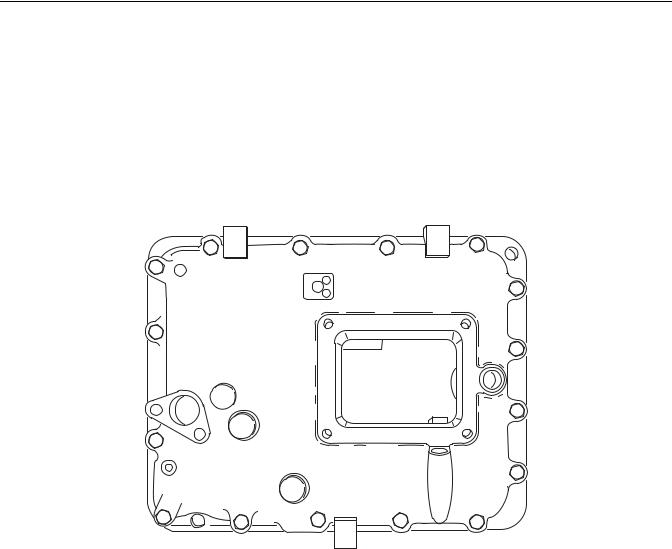
Model Designations
Model Options
Torque Rating
The torque rating of the transmission specified in the model number is the input torque capacity in lb. ft.. Various torque ratings are available. For more information, call the Roadranger Help Desk at 1-800-826-HELP (4357).
Two types of shift bar housings are available for this transmission. Both are described and shown below.
Shift Bar housings
Standard: The standard shift bar housing has a gear shift lever opening that is located toward the rear of the transmission. The housing is shown in figure 1-2.
Fig 1-2
6
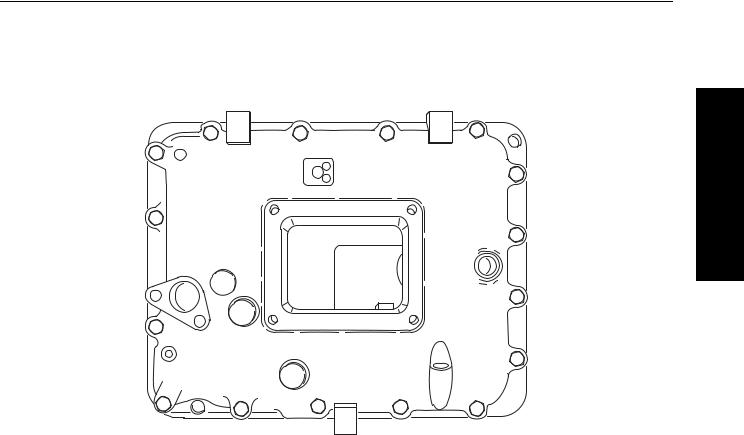
Model Designations
Forward Opening: The forward opening shift bar housing has a gear shift lever opening located three inches closer to the front of the transmission than the standard opening. This forward design allows greater flexibility in mounting the transmission and in indicated by an “F” in the model number. The housing is shown in figure1-3.
Designations Model
Fig 1-3
Lubrication Pumps
Two types of lubrication pumps are available for use on this transmission and are described below:
PTO Driven: A PTO driven pump is externally mounted on the 6 or 8 bolt PTO openings and driven off the PTO gear.
Auxiliary Countershaft: An auxiliary countershaft pump is mounted on the rear of the transmission and driven off the auxiliary countershaft.
Power Take Off (PTO) Usage
PTO’s can be mounted in the following ways:
6 or 8 Bolt: The 6 or 8 bolt openings are standard with the transmission. The PTO is mounted to the opening and driven from the PTO gear on the front countershaft.
Thru-Shaft: The thru-shaft PTO mounts on the rear of the transmission. It requires a special auxiliary housing and main case countershaft with internal splines.
7
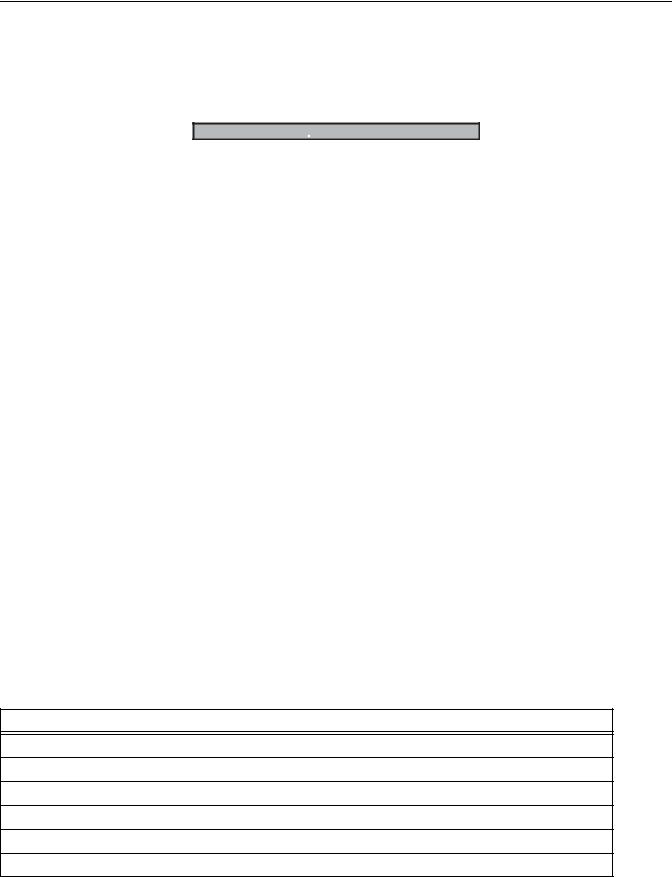
Lubrication
Lubrication Specifications
Note: For a list of Eaton Approved Synthetic Lubricants, see TCMT-0021 or call 1-800-826-HELP (4357).
Note: The use of lubricants not meeting these requirements will affect warranty coverage.
Note: Additives and friction modifiers must not be introduced. Never mix engine oils and gear oils in the same transmission.
 IMPORTANT
IMPORTANT
Transmission filters should be changed during regular lube intervals. Inspection of the transmission filter should be conducted during preventive maintenance checks for damage or corrosion. Replace as necessary.
Buy from a reputable dealer
For a complete list of approved and reputable dealers, write to: Eaton Corporation, Worldwide Marketing Services, P.O. Box 4013, Kalamazoo, MI 49003
Transmission Operating Angles
If the transmission operating angle is more than 12 degrees, improper lubrication will occur. The operating angle is the transmission mounting angle in the chassis plus the percent of upgrade (expressed in degrees). For operating angles over 12 degrees, the transmission must be equipped with an oil pump or cooler kit to insure proper lubrication.
Operating Temperatures with Oil Coolers
The transmission must not be operated consistently at temperatures above 250° F. Operation at temperatures above 250°F [121°C] causes loaded gear tooth temperatures to exceed 350°F [177°C] which will ultimately destroy the heat treatment of the gears. If the elevated temperature is associated with an unusual operating condition that will reoccur, a cooler should be added, or the capacity of the existing cooling system increased.
The following conditions in any combination can cause operating temperatures of over 250° F [121°C]:
•Operating consistently at slow speed.
•High ambient temperatures.
•Restricted air flow around transmission.
•Use of engine retarder.
•High horsepower operation.
Note: Transmission coolers must be used to reduce the operating temperatures when the above conditions are encountered.
Oil Cooler Chart
Table 4
Transmission Oil Coolers are:
Recommended
•With engines of 350 H.P. and above. Required
•With engines 399 H.P. and above and GCW’s over 90,000 lbs.
•With engines 399 H.P. and above and 1400 lb. ft. or greater torque.
•With engines 1500 lb. ft. and above
8
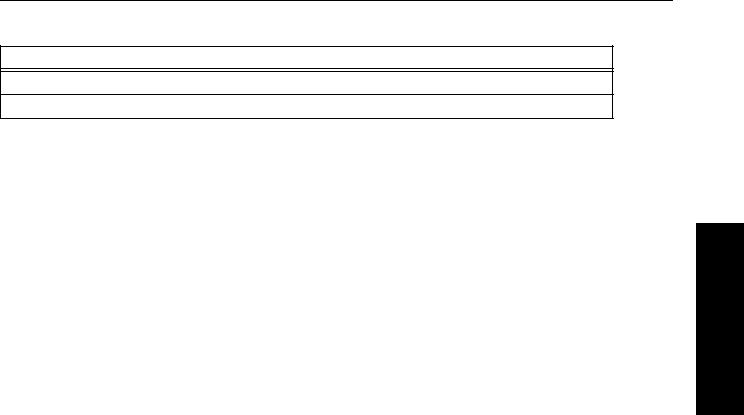
Lubrication
Table 4
Transmission Oil Coolers are:
18-speed AutoShift transmissions require use of an Eaton supplied oil-to-water cooler or approved equivalent.
• With engines 450 H.P. and above.
Lubrication
9
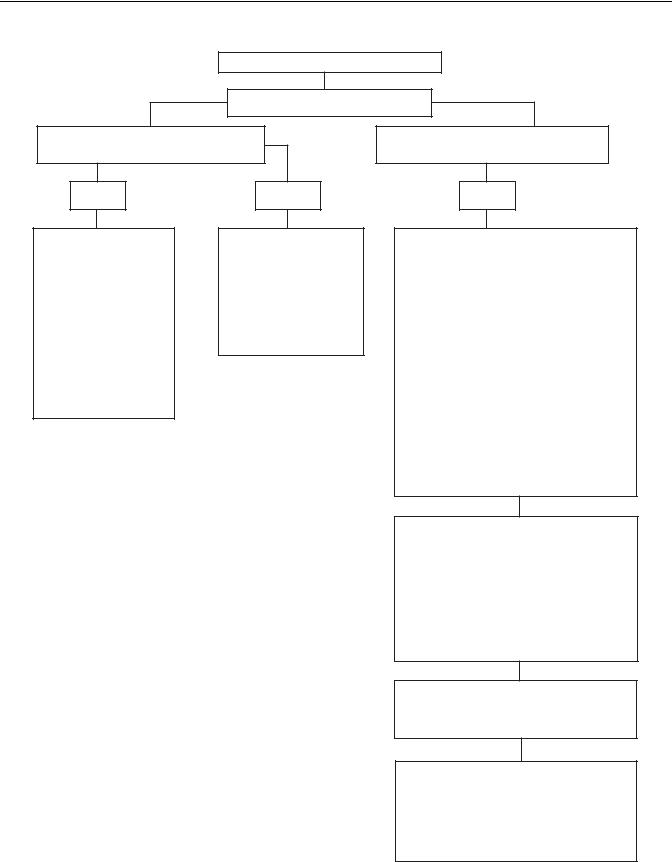
Lubrication
Oil Leak Inspection Process
Inspect for Oil Leak
Determine if it is a Weep or a Leak
Weep: Stained, damp, no drips, light oil film, dirt adhered to the contaminated area.
Leak: Extremely wet or dripping of oil in the contaminated area.
Gasket
1.Clean suspected oil weep area with a clean dry cloth or mild soluble degreaser.
2.Ensure lube is to proper level.
3.Notify the customer that it is only a weep and it is not considered to be detrimental to the life of the transmission.
4.Repair is complete.
Rear Seal
1.Do not repair: Rear seal is designed to allow minimal seepage (refer to Roadranger TCSM-0912 Seal Maintance Guide).
2.Ensure lube is to proper level.
Leak
Step 1
1.Determine the origin of the leak path.
2.If origin of leak is obvious skip to Step 3.
3.If the origin of the oil leak is not obvious then use either of the two following steps to determine the oil leak:
Note: Do not use a high pressure spray washer to clean the area. Use of a high pressure spray may force contamination into the area of concern and temporarily disrupt the leak path.
i.Clean area with a clean dry cloth or mild soluble degreaser and fill the transmission to the proper lube level.
OR
ii.Clean the area as noted above and insert tracer dye into the transmission lube and fill transmission to proper lube level.
Step 2
Operate vehicle to normal transmission operating temperature and inspect the area for oil leak(s) visually or if tracer dye was introduced use an UVL (Ultraviolet Light) to detect the tracer dye’s point of origin.
Note: When inspecting for the origin of the leak(s) make sure the assumed leak area is not being contaminated by a source either forward or above the identified area such as the engine, shift tower, shift bar housing, top mounted oil cooler, etc...
Step 3
Once the origin of the leak is identified, repair the oil leak using proper repair procedures from the designated model service manual.
Step 4
After the repair is completed, verify the leak is repaired and operate the vehicle to normal transmission operating temperature.
Inspect repaired area to ensure oil leak has been eliminated. If the leak(s) still occurs, repeat steps or contact the Roadranger Call Center at 1-800-826-4357.
10
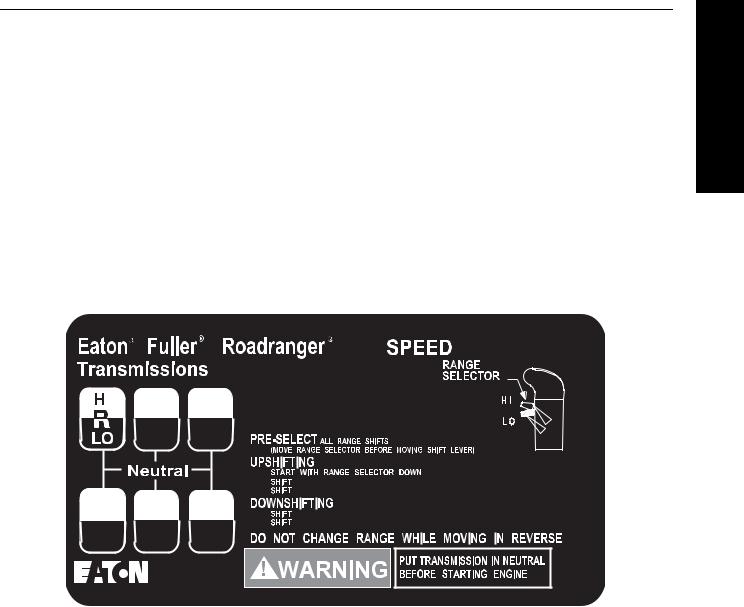
Transmission Operation and Theory
Transmission Operation
Transmission Operation
This Eaton® Fuller® Roadranger® transmission model contains ten forward speeds and two and reverse speeds. The gear shift lever mechanically engages and disengages five forward gears and one reverse gear in the transmission front section. The range lever on the shift knob allows the operator to control an air shifted auxiliary section to provide a low and high “range”. The five forward gears selected in low range are used again in high range to provide the remaining 5 progressive forward gear ratios.
Once the highest shift lever position (5th gear) is obtained in low range, the operator preselects the range shift lever for high range. The range shift occurs in neutral as the shift lever is moved from 5th gear position to 6th gear position.
When downshifting, the operator preselects the range lever for low range and the range shift occurs automatically as the shift lever is moved to the next gear position. Refer to the illustrations in the “Power Flow” portion of this section.
Shift Patterns
A Shift pattern decal that explains how to properly shift the transmission should be in your vehicle. The decal is shown in Figure 2-1. If it has been lost, a replacement may be obtained from any Eaton® parts distributor.
|
|
|
10 |
|
7 |
9 |
|
|
|
||
|
|
||
|
2 |
4 |
|
|
|
|
1-2-3-4-5 RAISE RANGE SELECTOR |
6 |
8 |
10 |
6-7-8-9-10 |
10-9-8-7-6 MOVE RANGE SELECTOR DOWN |
|||
1 |
3 |
5 |
5-4-3-2-1 |
|
and Operation Transmission
Theory
Figure 2-1 Shift Pattern Decal
11

Transmission Operation and Theory
Operating Instructions
Initial Start - Up
 WARNING
WARNING
Before starting a vehicle always be seated in the driver’s seat, move the shift lever to neutral, and set the parking brakes.
 CAUTION
CAUTION
Before moving a vehicle, make sure you understand the shift pattern configuration.
1.Make sure the shift lever is in neutral and the parking brakes are set.
2.Turn on the key switch, and start the engine.
3.Allow the vehicle air pressure to build to the correct level. Refer to your “Operator and Service Manual” supplied with the truck.
4.Apply the service brakes.
5.Release the parking brakes on the vehicle.
6.Make sure the Range Selector is down in the low range position as shown below in Figure 2-2.
Figure 2-2
7.Depress the clutch pedal to the floor.
8.Move the shift lever to the desired initial gear.
9.Slowly release the clutch pedal and apply the accelerator.
12

Transmission Operation and Theory
Upshifting
CAUTION: Never move the Range Selector with the shift lever in neutral while the vehicle is moving.
1.Move the shift lever, double-clutching, to the next desired gear position in low range.
Range shift - low to high Range (5th to 6th)
2.When in last gear position for low range and ready for the next upshift, pull up the Range Selector and move the shift lever, double-clutching, to the next higher speed position according to your shift pattern. As the shift lever passes through neutral, the transmission will automatically shift from low to high range.
Note: If after attempting a range shift to high, the transmission remains in neutral with the shift lever in gear, the range synchronizer protection device may deactivated. Move the shift lever into neutral to allow the range shift to complete, and then move the shift lever back into gear.
3.Continue upshifting, double-clutching, to the next desired gear position in high range
Downshifting
1.Move the shift lever, double-clutching, to the next desired gear position in high range
Range shift from High Range to Low Range (6th to 5th)
2.While in 6th and ready for the next downshift, preselect low range, and push the Range Selector down.
3.Move the shift lever, double-clutching, to the next desired gear position in low range. As the shift lever passes through neutral, the transmission automatically shifts from high range to low range.
4.Continue downshifting, double-clutching, to the next desired gear position in low range
Double - Clutching Procedure
1.Depress the pedal to disengage the clutch.
2.Move the shift lever to neutral.
3.Release the pedal to engage the clutch.*
a.Upshifts-decelerate engine until engine RPM and road speed match.
b.Downshifts-accelerate engine until engine RPM and road speed match.
4.Quickly depress the pedal to disengage the clutch and move the shift lever to the next gear speed position.
5.Release the pedal to engage the clutch.
Note: * By engaging the clutch with the shift lever in the neutral position, the operator is able to control the mainshaft gear RPM since it is regulated by engine RPM. This procedure allows the operator to speed up or slow down the mainshaft gearing to properly match the desired gear speed and output shaft speed.
and Operation Transmission
Theory
13

Transmission Operation and Theory
Additional Operating Information
Preselect
IMPORTANT: Always preselect all range shifts when upshifting or downshifting. Preselection requires that the Range Selector is moved to the needed position before starting the lever shift.
Preselected range shifts are completed automatically as the lever is moved through neutral and into the next gear. Preselecting all range shifts prevents damage to the transmission and provides for smoother shifts.
SynchroSaver™
The transmission contains a range synchronizer protection device to prevent damage to the high range synchronizer. If the shift lever engages a front section gear prior to completion of the air shift into high range, the range synchronizer remains in neutral, preventing damage to the range synchronizer. If this neutral condition occurs, the operator must shift the lever to neutral and then back into gear to complete the range shift.
Clutch Brake (Used with pull-type clutches)
The Clutch Brake is applied by fully depressing the clutch pedal to the floor board. When applied, the brake slows down and can stop the transmission front box gearing. It is a disc-type brake incorporated into the clutch and transmission drive gear assemblies. Never use the Clutch Brake when upshifting or downshifting. Use only for initial gear engagement when the vehicle is standing still.
Countershaft Brake (Used with push-type clutches)
The control button is mounted on the shift lever just below the shift knob. To operate the brake, disengage the clutch, press down the control button, and shift into 1st or reverse. This is an air operated mechanical brake which slows down the transmission gearing by forcing a piston against the countershaft PTO gear.
Note: Never use the Countershaft Brake when upshifting or downshifting. Use only for initial gear engagement when the vehicle is standing still.
Driver Instruction Booklet
Complete operation instruction can be found in the Drive Instruction Booklet TRDR-0515.
14
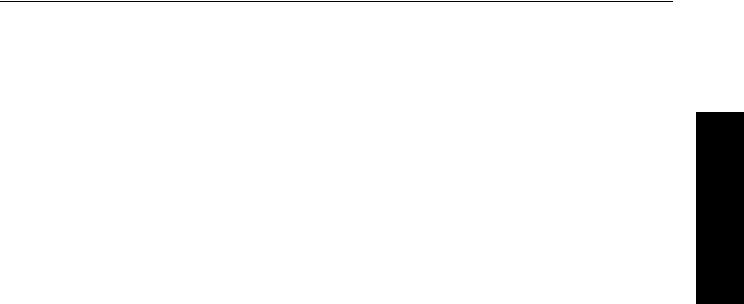
Tools
Tool Specifications
Some repair procedures pictured in this manual show the use of specialized tools. Their actual use is recommended as they make transmission repair easier, faster, and prevent costly damage to critical parts.
For the most part, ordinary mechanic's tools such as socket wrenches, screwdrivers, etc., and other standard shop items such as a press, mauls and soft bars are the only tools needed to successfully disassemble and reassemble any Eaton®Fuller® transmission.
The following tables list and describe the typical tools required to properly service this model transmission above and beyond the necessary basic wrenches, sockets, screwdrivers, and prybars.
General Tools
The following tools are available from several tool manufacturers such as Snap-On, Mac, Craftsman, OTC, and many others.
Table 5 General Tools
TOOL |
PURPOSE |
|
|
|
|
0 |
- 100 lb. ft. 1/2" drive Torque Wrench |
General torquing of fasteners (Typically 15-80 lb. ft.) |
|
|
|
0 |
- 600 lb. ft. 3/4" or 1" drive Torque Wrench |
Torquing of output nut to 500 lb. ft. |
|
|
|
0 |
- 50lb. in. 3/8" drive Torque Wrench |
General torquing of fasteners |
|
|
|
0 |
- 30lb. in. 1/4" drive Torque Wrench |
Torquing of capscrews to 7 lb. in. during auxiliary countershaft |
|
|
bearing endplay setting procedure |
|
|
|
70 MM or 2 2/4" Socket - Standard Depth |
To remove the output yoke nut |
|
|
|
|
Large Brass Drift |
Used to protect shafts and bearings during removal |
|
|
|
|
Large Dead Blow Hammer or Maul |
To provide force for shaft and bearing removal |
|
|
|
|
Snap Ring Pliers - Large Standard External |
To remove the snap rings at the auxiliary drive gear, input shaft |
|
|
|
bearing, and countershaft bearings |
|
|
|
Feeler Gauges |
To set mainshaft washer endplay and auxiliary tapered bearing |
|
|
|
endplay |
|
|
|
Rolling Head (Crow's Foot) Prybar |
To remove the auxiliary drive gear bearing |
|
|
|
|
(2) Air Pressure Gauges 0-100 PSI (0-1034 kPa) |
To troubleshoot and verify correct operation of air system |
|
|
|
|
Universal Bushing Driver |
To remove and install clutch housing bushings. Bushing OD = |
|
|
|
1.125", ID = 1.000" |
|
|
|
Tools
15

Tools
The following special tools are designed for this Eaton®Fuller® transmission. The addresses and phone numbers of the tool suppliers are listed after the table. This list is provided as a convenience to our customers. These tools are manufactured by independent companies with no relationship to Eaton®Fuller®. Eaton®Fuller® does not warrant the fit or function of the listed tools. To obtain the tools, contact the tool supplier directly.
REF. |
TOOL |
PURPOSE |
G & W TOOL |
GREAT LAKES |
OTC TOOL |
|||
NO. |
|
|
NO. |
TOOL NO. |
|
|
NO. |
|
|
|
|
|
|
|
|
|
|
|
|
|
|
|
|
|
|
|
T1 |
Output Yoke Puller |
May be required to remove a rusted |
SP-450 |
|
|
|
7075 |
|
|
|
output yoke. |
|
|
|
|
|
|
|
|
|
|
|
|
|
|
|
T2 |
Auxiliary Section Hanger |
To support, or hang, the auxiliary sec- |
G-40 |
T-125 |
|
|
5061 |
|
|
|
tion in the horizontal position. |
|
|
|
|
|
|
|
|
|
|
|
|
|
|
|
T3 |
Auxiliary |
To hold the auxiliary countershafts in |
G-250 |
T-311 |
|
|
5062 |
|
|
Countershaft |
position while installing the auxiliary |
(can also use |
|
|
|
|
|
|
Support and Shim Tool |
section in the horizontal position. Also |
G-251) |
|
|
|
|
|
|
|
to simplify the |
|
|
|
|
|
|
|
|
checking and setting of the auxiliary |
|
|
|
|
|
|
|
|
countershaft bearing endplay. |
|
|
|
|
|
|
|
|
|
|
|
|
|
|
|
T4 |
Shift Lever Spring |
To install the shift tower tension |
G-116 |
T-170 |
|
|
|
|
|
Installation Tool |
spring. |
|
|
|
|
|
|
|
(Tension Spring Driver) |
|
|
|
|
|
|
|
|
|
|
|
|
|
|||
T5 |
Slide Hammer |
To remove the output seal and reverse |
G-70 (with g- |
T-150 (with T- |
1155 Slide |
|||
|
|
idler shafts. Requires 1/2"-13 threads. |
247D for Rev. |
151 |
metric |
Hammer / |
||
|
|
(Optional, idler shaft can be driven out |
Idler removal) |
adapter) |
|
8007 |
1/2" -13 |
|
|
|
from front.) |
|
|
|
|
Adapter |
|
|
|
|
|
|
|
|
|
|
T6 |
Bearing Puller |
To remove front section countershaft |
G-246 |
T-2 |
|
|
7070A Kit |
|
|
|
bearings. |
|
|
|
|
|
|
|
|
|
|
|
|
|
|
|
T7 |
Bearing Driver |
To install front section countershaft |
G-230 |
T-101 |
Kit |
or |
|
|
|
|
bearings |
|
T-120 with |
T- |
|
|
|
|
|
|
|
120A adapter |
|
|
||
|
|
|
|
|
|
|
|
|
T8 |
Bearing Driver |
To install the front countershaft rear |
G-230 |
T-101 Kit |
|
|
|
|
|
|
bearings |
|
|
|
|
|
|
|
|
|
|
|
|
|
|
|
T9 |
Countershaft |
To support and locate the front |
G-54 |
T-132 |
|
|
7109 |
|
|
Support Tools (2) |
section countershafts during |
|
|
|
|
|
|
|
|
bearing removal and installation. |
|
|
|
|
|
|
|
|
|
|
|
|
|
|
|
T10 |
Input Bearing Driver |
To install input bearing on input shaft. |
G-35 |
T-120 |
|
|
5066 (2" shaft) |
|
|
|
|
|
|
|
|
|
|
T11 |
Bearing Puller |
To remove the auxiliary countershaft |
G-247 or |
|
|
|
1123 / 927 |
|
|
|
tapered bearings. |
G-247A |
|
|
|
|
|
|
|
|
|
|
|
|
|
|
T12 |
Bearing Driver |
To install the auxiliary countershaft ta- |
G-230 |
T-101 Kit |
|
|
|
|
|
|
pered bearings. |
|
|
|
|
|
|
|
|
|
|
|
|
|
|
|
T13 |
Output Seal Removal Tool |
To remove the output seal in |
|
|
|
|
Use |
27315 |
|
|
chassis. Can use slide hammer. |
|
|
|
|
hook with 1155 |
|
|
|
|
|
|
|
|
slide hammer |
|
|
|
|
|
|
|
|
|
|
|
|
|
|
|
|
|
||
* Tool numbers are referenced in the service procedures. |
|
|
|
|
|
|
||
|
|
|
|
|
|
|
|
|
16

Tools
REF. |
TOOL |
PURPOSE |
G & W TOOL |
GREAT LAKES |
OTC TOOL |
|
|
||
NO. |
|
|
NO. |
TOOL NO. |
|
NO. |
|
|
|
|
|
|
|
|
|
|
|
|
|
|
|
|
|
|
|
|
|
|
|
T14 |
Auxiliary Section Removal |
To attach transmission jack to |
G-115 |
|
|
49611 |
|
|
|
|
Adapter Plate |
auxiliary section for auxiliary |
|
|
|
(Used with OTC |
|
|
|
|
|
|
|
|
|||||
|
|
section removal in chassis. |
|
|
|
transmission |
|
|
|
|
|
|
|
|
|
jack P/N 5019.) |
|
|
|
|
|
|
|
|
|
|
|
|
|
T15 |
Mainshaft Hook |
To assist in lifting of mainshaft from |
G-225 |
|
T-165 |
|
|
|
|
|
|
front section. |
|
|
|
|
|
|
Tools |
|
|
|
|
|
|
|
|
|
|
T16 |
Input Bearing Puller |
To remove input bearing. |
G-38 |
|
T-3 |
7070A Kit |
|
||
|
|
|
|||||||
|
|
|
|
|
|
|
|
|
|
T17 |
Bearing Race Puller |
To remove the auxiliary countershaft |
G-247B |
(used |
T-157 with |
7136 |
puller at- |
|
|
|
|
tapered bearing outer races. |
with |
G-70 |
T-150 |
tached to 1155 |
|
|
|
|
|
|
slide hammer) |
|
slide hammer |
|
|
||
|
|
|
|
|
|
|
|
|
|
T18 |
Bearing Race Installer |
To install the auxiliary countershaft ta- |
G-247C |
(used |
T-101 Kit |
27524/27530 |
|
|
|
|
|
pered bearing outer races. |
with G-230) |
|
discs used with |
|
|
||
|
|
|
|
||||||
|
|
|
|
|
|
27488 handle |
|
|
|
|
|
|
|
|
|
and |
10020 |
|
|
|
|
|
|
|
|
screw. |
|
|
|
|
|
|
|
|
|
|
|
|
|
|
|
|
|
|
|
|
|
||
* Tool numbers are referenced in the service procedures. |
|
|
|
|
|
|
|
||
|
|
|
|
|
|
|
|
|
|
Table 7 Shop Equipment
20 Ton capacity press |
To press countershaft gears from countershaft. |
|
|
Special Tools Manufacturers
Below are the addresses and phone numbers of the companies that make tools specifically for Eaton® Fuller® transmissions.
G & W Tool Company |
Great Lakes Tool |
O.T.C. |
907 S. Dewey Ave |
8530 M-89 |
655 Eisenhower Dr. |
Wagoner, OK 74467 |
Richland, MI 49083 |
Owatonna, MN 55060-1171 |
800-247-5882 |
800-877-9618 |
800-533-6127 |
www.gwtoolco.com |
269-629-9628 |
|
|
www.greatlakestools.com |
|
17

Tools
Eaton Aftermarket Parts
The following tools are available through Eaton Aftermarket Parts. To obtain any of the tools listed, contact your local Eaton parts distributor.
TOOL |
PURPOSE |
EATON PART NUMBER |
|
|
|
|
|
|
5/32" Air Line Release Tool |
To remove 5/32" air lines from |
P/N 4301157 included in kit K-2394. |
|
push-to-connect fittings. |
|
|
|
|
Air Line Cutting Tool |
To cut plastic air lines smoothly |
P/N 4301158 included in kit K-2394. |
|
and squarely. |
|
|
|
|
Output Seal Driver |
To install output seal. |
For 7 series: Eaton P/N 5564501 driver. |
|
|
For 9 series: Use Eaton P/N 5564509 adapter with 5564501 driv- |
|
|
er. Both parts included in Complete Eaton Seal Kit P/N K-3651. |
|
|
|
Output Seal Slinger Driver |
To install output seal slinger. |
For 7 series: Eaton P/N 71223. |
|
|
For 9 series: Eaton P/N 4303829. |
|
|
|
18
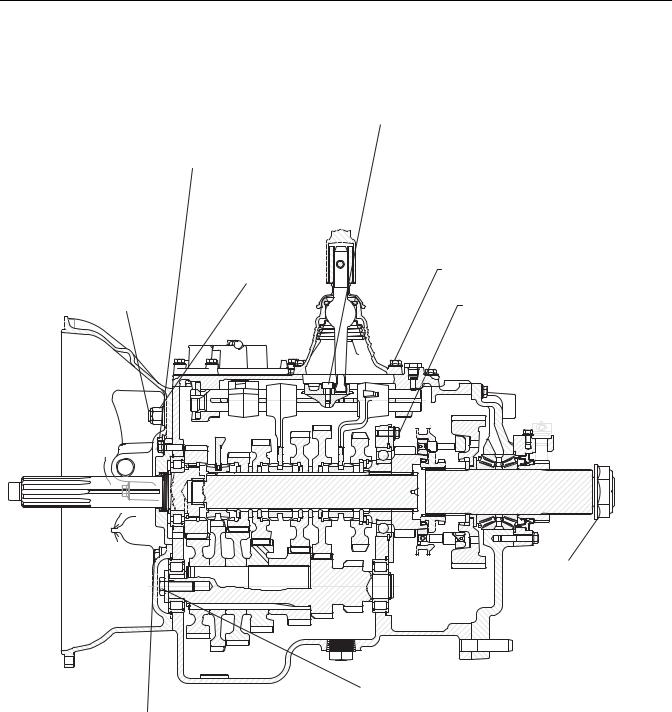
Transmission Overhaul Procedures-Bench Service
Torque Specifications
SHIFT BLOCK TO SHIFT ROD CAPSCREW 54-61 N.m [40-45 lb.ft.]
M10x1.5 THREAD
FRONT BEARING COVER CAPSCREWS 54-61 N.m [40-45 lb.ft.]
M10x1.5 THREAD
|
CLUTCH HOUSING NUTS |
|
|
ALUMINUM HOUSING |
|
CLUTCH HOUSING STUDS |
CAST IRON HOUSING |
SHIFT LEVER HOUSING CAPSCREWS |
244-271 N.m [180-200 lb.ft.] |
||
81 N.m [60 lb.ft.] MIN |
M16x1.5 THREAD |
54-61 N.m [40-45 lb.ft.] |
M16x2 THREAD |
|
M10x1.5 THREAD |
DRIVEN UNTIL BOTTOMED |
|
|
|
AUX DRIVE GEAR |
|
|
|
|
|
|
BEARING RETAINER CAPSCREWS |
|
|
54-61 N.m [40-45 lb.ft.] |
|
|
M10x1.5 THREAD |
OUTPUT SHAFT NUT 610-677 N.m [450-500 lb.ft.] M48x2 THREAD
USE NYLON LOCKING INSERT (OILED AT YOKE INSTALLATION)
|
COUNTERSHAFT FRONT BEARING |
CLUTCH HOUSING CAPSCREWS |
RETAINER CAPSCREWS |
122-162 N.m [90-120 lb.ft.] |
|
ALUMINUM HOUSING |
.625-18-THREAD |
CAST IRON HOUSING |
|
97-108 N.m [72-80 lb.ft.] |
|
M12x1.75 THREAD |
|
Service Bench-Procedures |
Overhaul Transmission |
|
|
19
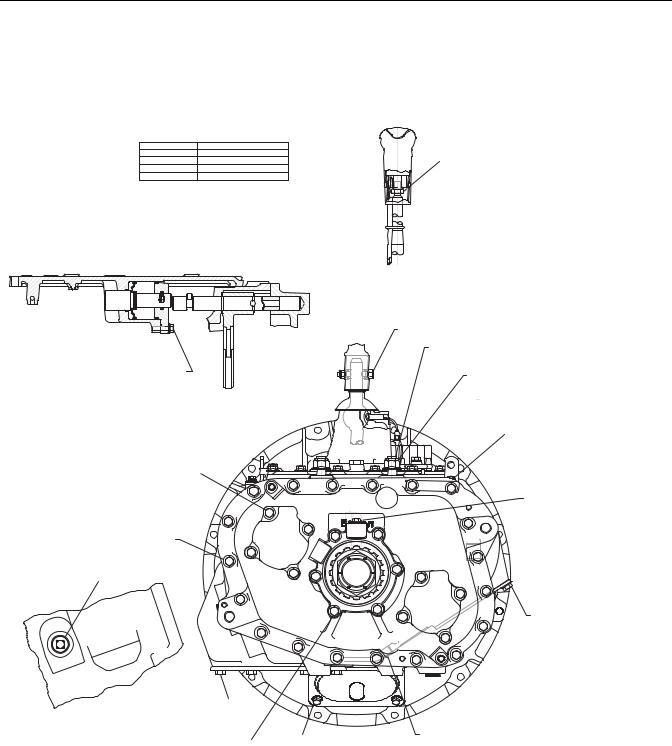
Transmission Overhaul Procedures-Bench Service
PIPE THREAD TORQUE SPECIFICATIONS. UNLESS OTHERWISE SPECIFIED:
PIPE THREAD SIZE |
HYDRAULIC LINE SEALANT |
.0625 - 27 |
6.8-9.5 N.m [60-84 lb.in] |
.125 - 27 |
9.5-13.6 N.m [84-120 lb.in] |
.250 - 18 |
20.3-27.1 N.m [180-240 lb.in] |
.375 - 18 |
33.9-47.5 N.m [300-420 lb.in] |
MASTER VALVE JAM NUT 48-61 N.m [35-45 lb.ft.]
.500-13 THREAD
RANGE COVER TO SBH
RANGE CYL CAPSCREWS 27-31 N.m [20-23 lb.ft.] M8x1.25 THREAD
AUX C'SHAFT REAR BEARING COVER CAPSCREWS 54-61 N.m [40-45 lb.ft.]
M10x1.5
AUX HOUSING CAPSCREWS 54-61 N.m [40-45 lb.ft.] M10x1.5 THREAD
OIL FILL PLUG
47-67 N.m [35-50 lb.ft.]
1.0625-12 THREAD
LARGE PTO COVER CAPSCREWS 77-88 N.m [57-65 lb.ft.] M12x1.75 THREAD
REAR BEARING COVER CAPSCREWS 54-61 N.m [40-45 lb.ft.]
M10x1.5 THREAD
SHIFT LEVER SHOULDER BOLT AND NUT 14-16 N.m [10-12 lb.ft.]
.3125-18 THREAD
SUPPORT STUDS 81 N.m [60 lb. ft.] M16x2 THREAD
DRIVE UNTIL BOTTOMED
SUPPORT STUD NUTS 230-257 N.m [170-190 lb.ft.] M16x1.5 THREAD
CAPTIVATED LIFTING EYE CAPSCREWS 54-61 N.m [40-45 lb.ft.]
M10x1.5 THREAD
HAND HOLE COVER CAPSCREWS 19-24 N.m [14-18 lb .ft.]
.3125-18 THREAD
SPEEDO SENSOR CAPSCREW 27-31 N.m [20-23 lb.ft] M8x1.25 THREAD
SMALL PTO COVER CAPSCREWS 54-61 N.m [40-45 lb.ft.] M10x1.5 THREAD
 OIL DRAIN PLUG 61-74 N.m [45-55 lb.ft.]
OIL DRAIN PLUG 61-74 N.m [45-55 lb.ft.]
.750 PIPE THREAD
THERMOCOUPLE PLUG 54-67 N.m [40-50 lb.ft.]
.500 PIPE THREAD
20
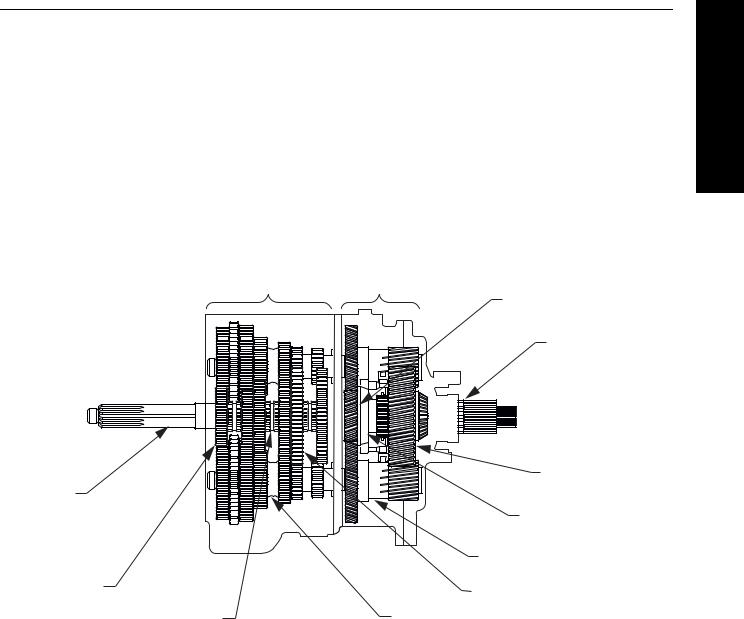
Power Flow
Power Flow Diagrams
An understanding of the engine’s power flow through a transmission in each particular gear will assist the technician in troubleshooting and servicing a transmission.
The Eaton Fuller Roadranger transmission can be thought of as two separate “transmissions” combined into one unit. The first “transmission” or front section contains six gear sets which are shifted with the gear shift lever. The second “transmission” called the auxiliary section, contains two gear sets and is shifted with air pressure.
Note: This transmission is referred to as a constant mesh type transmission. When in operation, all gears are turning even though only some of them are transferring power.
Figure 2-3 below shows the transmission with the main components called out. Note that the transmission is in the neutral position because the sliding clutches are all in their center positions and not engaged is any gears.
Front Section |
Auxiliary Section |
Auxiliary Drive Gear
Output Shaft
(Auxiliary Mainshaft)
|
Auxiliary Mainshaft |
Input Shaft |
Reduction Gear |
|
|
|
Range Sliding Clutch |
|
Auxiliary Countershaft |
Main Drive Gear |
Mainshaft Gear |
|
|
Sliding Clutch |
Countershaft |
Figure 2-3. Transmission Components Important for Understanding Power Flow
Information General
21

Power Flow
Front Section Power Flow
Note: The heavy lines in Figure 2-4 outline the power flow description below. For help in understanding the transmission components, refer to Figure 2-3.
1.Power (torque) from the vehicle’s engine is transferred to the transmission’s input shaft.
2.The input shaft rotates the main drive gear through internal splines in the hub of the gear.
3.The main drive gear meshes with both countershaft driven gears and the torque is split between both countershafts.
4.Because the countershaft gears are in constant mesh with the mainshaft gears, all the front section gearing rotates. However, only the engaged mainshaft gear will have torque. External clutching teeth on the sliding clutch will engage internal clutching teeth on the selected mainshaft gear. Torque will now be provided from both opposing countershaft gears, into the engaged mainshaft gear, and through the sliding clutch to the front section mainshaft.
5.The rear of the front section mainshaft is spined into the auxiliary drive gear and torque is now delivered to the auxiliary section.
|
|
|
|
|
|
|
|
|
|
|
|
|
|
|
|
|
|
|
|
|
|
|
|
|
|
|
|
|
|
|
|
|
|
|
|
|
|
|
|
|
|
|
|
|
|
|
|
|
|
|
|
|
|
|
|
|
|
|
|
|
|
|
|
|
|
|
|
|
|
|
|
|
|
|
|
|
|
|
|
|
|
|
|
|
|
|
|
|
|
|
|
|
|
|
|
|
|
|
|
|
|
|
|
|
|
|
|
|
|
|
|
|
|
|
|
|
|
|
|
|
|
|
|
|
|
|
|
|
|
|
|
|
|
|
|
|
|
|
|
|
|
|
|
|
|
|
|
|
|
|
|
|
|
|
|
|
|
|
|
|
|
|
|
|
|
|
|
|
|
|
|
|
|
|
|
|
|
|
|
|
|
|
|
|
|
|
|
|
|
|
|
|
|
|
|
|
|
|
|
|
|
|
|
|
|
|
|
|
|
|
|
|
|
|
|
|
|
|
|
|
|
|
|
|
|
|
|
|
|
|
|
|
|
|
|
|
|
|
|
|
|
|
|
|
|
|
|
|
|
|
|
|
|
|
|
|
|
|
|
|
|
|
|
|
|
|
|
|
|
|
|
|
|
|
|
|
|
|
|
|
|
|
|
|
|
|
|
|
|
|
|
|
|
|
|
|
|
|
|
|
|
|
|
|
|
|
|
|
|
|
|
|
|
|
|
|
|
|
|
|
|
|
|
|
|
|
|
|
|
|
|
|
|
|
|
|
|
|
|
|
|
|
|
|
|
|
|
|
|
|
|
|
|
|
|
|
|
|
Sliding Clutch Back |
|||
|
|
|
|
|
|
|
|
|
|
|
|
|
|
|
|
|
|
|
|
|
|
|
|
|
|
|
|
|
||||
|
|
|
|
|
|
|
|
|
|
|
|
|
|
|
|
|
|
|
|
|
|
|
|
|
|
|
|
|
||||
|
|
|
|
|
|
|
|
|
|
|
|
|
|
|
|
|
|
|
|
|
|
|
|
|
|
|
|
|
||||
|
|
|
|
|
|
|
|
|
|
|
|
|
|
|
|
|
|
|
|
|
|
|
|
|
|
|
|
|
||||
|
|
|
|
|
|
|
|
|
|
|
|
|
|
|
|
|
|
|
|
|
|
|
|
|
|
|
|
|
||||
|
|
|
|
|
|
|
|
|
|
|
|
|
|
|
|
|
|
|
|
|
|
|
|
|
|
|
|
|
||||
|
|
|
|
|
|
|
|
|
|
|
|
|
|
|
|
|
|
|
|
|
|
|
|
|
|
|
|
|
||||
|
|
|
|
Sliding Clutch Forward |
|
|
|
|
|
|
|
|
||||||||||||||||||||
Figure 2-4 Front Section Torque (1st Gear)
22
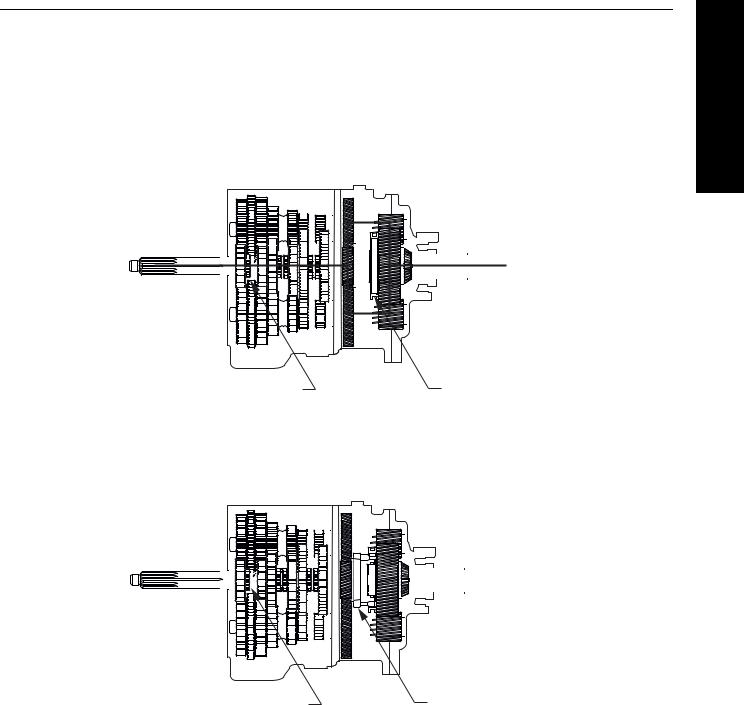
Power Flow
Front Section Power Flow - Direct gear
In direct gear (5th/10th for FR model, 4th/9th for FRO model), the front sliding clutch is moved forward and engages into the back of the main drive gear. Torque will flow from the input shaft to the main drive gear, main drive gear to sliding clutch, sliding clutch straight into the front section mainshaft which delivers the torque to the auxiliary drive gear.
Note: All countershaft and mainshaft gears will rotate, but the gears will not be loaded.
Information General
|
|
|
|
|
|
|
|
|
|
|
|
|
|
|
|
|
|
|
|
|
|
|
|
|
|
|
|
|
|
|
|
|
|
|
|
|
|
|
|
|
|
|
|
|
|
|
|
|
|
|
|
|
|
|
|
|
|
|
|
|
|
|
|
|
|
|
|
|
|
|
|
|
|
|
|
|
|
|
|
|
|
|
|
|
|
|
|
|
|
|
|
|
|
|
|
|
|
|
|
|
|
|
|
|
|
|
|
|
|
|
|
|
|
|
|
|
|
|
|
|
|
|
|
|
|
|
|
|
|
|
|
|
|
|
|
|
|
|
|
|
|
|
|
|
|
|
|
|
|
|
|
|
|
|
|
|
|
|
|
|
|
|
|
|
|
|
|
|
|
|
|
|
|
|
|
|
|
|
|
|
|
|
|
|
|
|
|
|
|
|
|
|
|
|
|
|
|
|
|
|
|
|
|
|
|
|
|
|
|
|
|
|
|
|
|
|
|
|
|
|
|
|
|
|
|
|
|
|
|
|
|
|
|
|
|
|
|
|
|
|
|
|
|
|
|
|
|
|
|
|
|
|
|
|
|
|
|
|
|
|
|
|
|
|
|
|
|
|
|
|
|
|
Sliding Clutch Forward |
|
|
|
|
|
|
|
|
|
|
Sliding Clutch Back |
|||||||||||||||||||||||||||
Figure 2-5 5th Gear FR, 4th Gear FRO
|
|
|
|
|
|
|
|
|
|
|
|
|
|
|
|
|
|
|
|
|
|
|
|
|
|
|
|
|
|
|
|
|
|
|
|
|
|
|
|
|
|
|
|
|
|
|
|
|
|
|
|
|
|
|
|
|
|
|
|
|
|
|
|
|
|
|
|
|
|
|
|
|
|
|
|
|
|
|
|
|
|
|
|
|
|
|
|
|
|
|
|
|
|
|
|
|
|
|
|
|
|
|
|
|
|
|
|
|
|
|
|
|
|
|
|
|
|
|
|
|
|
|
|
|
|
|
|
|
|
|
|
|
|
|
|
|
|
|
|
|
|
|
|
|
|
|
|
|
|
|
|
|
|
|
|
|
|
|
|
|
|
|
|
|
|
|
|
|
|
|
|
|
|
|
|
|
|
|
|
|
|
|
|
|
|
|
|
|
|
|
|
|
|
|
|
|
|
|
|
|
|
|
|
|
|
|
|
|
|
|
|
|
|
|
|
|
|
|
|
|
|
|
|
|
|
|
|
|
|
|
|
|
|
|
|
|
|
|
|
|
|
|
|
|
|
|
|
|
|
|
|
|
|
|
|
|
|
|
|
|
|
|
|
|
|
|
|
|
|
|
|
|
|
|
|
|
|
|
|
|
|
|
|
|
|
|
|
|
|
|
|
|
|
|
|
|
|
|
|
|
Sliding Clutch Forward |
||||
|
|
|
|
|
|
|
|
|
|
|
|
|
|
|
|
|
|
|
|
|
|
|
|
|
|
|
|
|
|||||
|
|
|
|
|
|
|
|
|
|
|
|
|
|
|
|
|
|
|
|
|
|
|
|
|
|
|
|
|
|||||
|
|
|
|
|
|
|
|
|
|
|
|
|
|
|
|
|
|
|
|
|
|
|
|
|
|
|
|
|
|||||
|
|
|
|
|
|
|
|
|
|
|
|
|
|
|
|
|
|
|
|
|
|
|
|
|
|
|
|
|
|||||
|
|
|
|
|
|
|
|
|
|
|
|
|
|
|
|
|
|
|
|
|
|
|
|
|
|
|
|
|
|||||
|
|
|
|
|
|
|
|
|
|
|
|
|
|
|
|
|
|
|
|
|
|
|
|
|
|
|
|
|
|||||
|
|
|
|
|
|
|
|
|
|
|
|
|
|
|
|
|
|
|
|
|
|
|
|
|
|
|
|
|
|||||
Sliding Clutch Forward |
|
|
|
|
|
|
|||||||||||||||||||||||||||
Figure 2-6 10th Gear FR, 9th Gear FRO
23
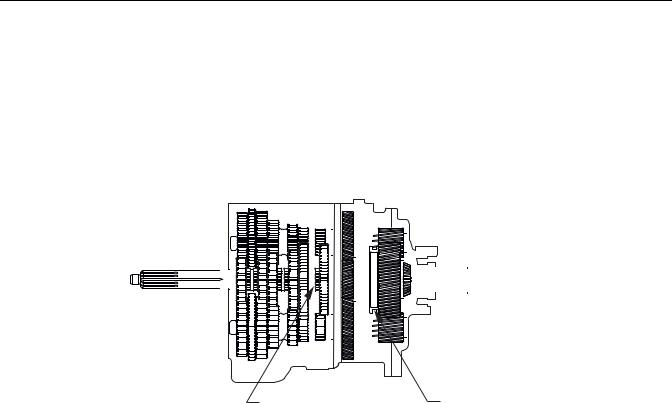
Power Flow
Front Section Power Flow - Reverse Gear
Torque will flow from the countershafts to the reverse idler gears. Torque will then flow from the reverse idler gears to the mainshaft reverse gear. Torque will now travel through the mainshaft reverse gear, the sliding clutch in the reverse position and then to the mainshaft and auxiliary drive gear.
Note: The idler gears cause the reversal of rotation.
|
|
|
|
|
|
|
|
|
|
|
|
|
|
|
|
|
|
|
|
|
|
|
|
|
|
|
|
|
|
|
|
|
|
|
|
|
|
|
|
|
|
|
|
|
|
|
|
|
|
|
|
|
|
|
|
|
|
|
|
|
|
|
|
|
|
|
|
|
|
|
|
|
|
|
|
|
|
|
|
|
|
|
|
|
|
|
|
|
|
|
|
|
|
|
|
|
|
|
|
|
|
|
|
|
|
|
|
|
|
|
|
|
|
|
|
|
|
|
|
|
|
|
|
|
|
|
|
|
|
|
|
|
|
|
|
|
|
|
|
|
|
|
|
|
|
|
|
|
|
|
|
|
|
|
|
|
|
|
|
|
|
|
|
|
|
|
|
|
|
|
|
|
|
|
|
|
|
|
|
|
|
|
|
|
|
|
|
|
|
|
|
|
|
|
|
|
|
|
|
|
|
|
|
|
|
|
|
|
|
|
|
|
|
|
|
|
|
|
|
|
|
|
|
|
|
|
|
|
|
|
|
|
|
|
|
|
|
|
|
|
|
|
|
|
|
|
|
|
|
|
|
|
|
|
|
|
|
|
|
|
|
|
|
|
|
|
|
|
|
|
|
|
|
|
|
|
|
|
|
|
|
|
|
|
|
|
|
|
|
|
|
|
|
|
|
|
|
|
|
|
|
|
|
|
|
|
|
|
|
|
|
|
|
Sliding Clutch Back |
|
|
|
|
|
|
|
Sliding Clutch Back |
|||||||||||||||||
|
|
|
|
|
|
|
|
|
|
|
|
|
|
|
|||||||||||||||||||
|
|
|
|
|
|
|
|
|
|
|
|
|
|
|
|||||||||||||||||||
|
|
|
|
|
|
|
|
|
|
|
|
|
|
|
|||||||||||||||||||
|
|
|
|
|
|
|
|
|
|
|
|
|
|
|
|||||||||||||||||||
Figure 2-7 Reverse Gear - Low Range
24
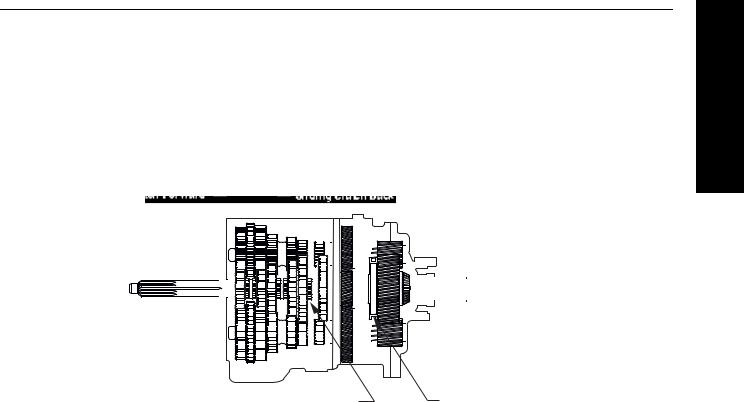
Power Flow
Auxiliary Section Power Flow - Low Range
The auxiliary drive gear transfers torque to both auxiliary countershafts.
If the auxiliary section is in low range, the range sliding clutch is rearward and engaged into the auxiliary mainshaft reduction gear. Torque will flow from the auxiliary countershafts, into the auxiliary mainshaft reduction gear, through the range sliding clutch and then into the output shaft (auxiliary mainshaft).
Information General
|
|
|
|
|
|
|
|
|
|
|
|
|
|
|
|
|
|
|
|
|
|
|
|
|
|
|
|
|
|
|
|
|
|
|
|
|
|
|
|
|
|
|
|
|
|
|
|
|
|
|
|
|
|
|
|
|
|
|
|
|
|
|
|
|
|
|
|
|
|
|
|
|
|
|
|
|
|
|
|
|
|
|
|
|
|
|
|
|
|
|
|
|
|
|
|
|
|
|
|
|
|
|
|
|
|
|
|
|
|
|
|
|
|
|
|
|
|
|
|
|
|
|
|
|
|
|
|
|
|
|
|
|
|
|
|
|
|
|
|
|
|
|
|
|
|
|
|
|
|
|
|
|
|
|
|
|
|
|
|
|
|
|
|
|
|
|
|
|
|
|
|
|
|
|
|
|
|
|
|
|
|
|
|
|
|
|
|
|
|
|
|
|
|
|
|
|
|
|
|
|
|
|
|
|
|
|
|
|
|
|
|
|
|
|
|
|
|
|
|
|
|
|
|
|
|
|
|
|
|
|
|
|
|
|
|
|
|
|
|
|
|
|
|
|
|
|
|
|
|
|
|
|
|
|
|
|
|
|
|
|
|
|
|
|
|
|
|
|
|
|
|
|
|
|
|
|
|
|
|
|
|
|
|
|
|
|
|
|
|
|
|
|
|
|
|
|
|
|
|
|
|
|
|
|
|
|
|
|
|
|
|
|
|
|
|
|
|
|
|
|
|
|
|
|
|
|
|
|
|
|
|
|
|
|
|
|
|
|
|
|
|
|
|
|
|
|
|
|
|
|
|
|
|
|
|
|
|
|
|
|
|
|
|
|
|
|
|
|
|
|
|
|
|
|
|
|
|
|
|
|
|
|
|
|
|
|
|
|
|
|
|
|
|
|
|
|
|
|
|
|
|
|
|
|
|
|
|
|
|
|
|
|
|
|
|
Sliding Clutch Back |
|||
|
|
|
|
|
|
|
|
|
|
|
|
|
|
|
|
|
|
|
|
|
|
|
|
|
|
|
|
|
|
|
||||
|
|
|
|
|
|
|
|
|
|
|
|
|
|
|
|
|
|
|
|
|
|
|
|
|
|
|
|
|
|
|
||||
|
|
|
|
|
|
|
|
|
|
|
|
|
|
|
|
|
|
|
|
|
|
|
|
|
|
|
|
|
|
|
||||
|
|
|
|
|
|
|
|
|
|
|
|
|
|
|
|
|
|
|
|
|
|
|
|
|
|
|
|
|
|
|
||||
|
|
|
|
|
|
|
|
|
|
|
|
|
|
|
|
|
|
|
|
|
|
|
|
|
|
|
|
|
|
|
||||
|
|
|
Sliding Clutch Forward |
|
|
|
|
|
|
|
|
|||||||||||||||||||||||
Figure 2-8 Low Range (Sliding Clutch Back)
25

Power Flow
Auxiliary Section Power Flow - High Range
If the auxillairy section is in high range, the range sliding clutch is forward and engaged into the back of the auxiliary drive gear. Torque will flow from the auxillairy drive gear to the range sliding clutch. Because the range sliding clutch has internal splines which connect to the output shaft, torque will flow straight through the auxiliary section.
Note: The auxiliary gearing will still turn, but the gears will not be loaded.
|
|
|
|
|
|
|
|
|
|
|
|
|
|
|
|
|
|
|
|
|
|
|
|
|
|
|
|
|
|
|
|
|
|
|
|
|
|
|
|
|
|
|
|
|
|
|
|
|
|
|
|
|
|
|
|
|
|
|
|
|
|
|
|
|
|
|
|
|
|
|
|
|
|
|
|
|
|
|
|
|
|
|
|
|
|
|
|
|
|
|
|
|
|
|
|
|
|
|
|
|
|
|
|
|
|
|
|
|
|
|
|
|
|
|
|
|
|
|
|
|
|
|
|
|
|
|
|
|
|
|
|
|
|
|
|
|
|
|
|
|
|
|
|
|
|
|
|
|
|
|
|
|
|
|
|
|
|
|
|
|
|
|
|
|
|
|
|
|
|
|
|
|
|
|
|
|
|
|
|
|
|
|
|
|
|
|
|
|
|
|
|
|
|
|
|
|
|
|
|
|
|
|
|
|
|
|
|
|
|
|
|
|
|
|
|
|
|
|
|
|
|
|
|
|
|
|
|
|
|
|
|
|
|
|
|
|
|
|
|
|
|
|
|
|
|
|
|
|
|
|
|
|
|
|
|
|
|
|
|
|
|
|
|
|
|
|
|
|
|
|
|
|
|
|
|
|
|
|
|
|
|
|
|
|
|
|
|
|
|
|
|
|
|
|
|
|
|
|
|
|
|
|
|
|
|
|
|
|
|
|
|
|
|
|
|
|
|
|
|
|
|
|
|
|
|
Sliding Clutch Forward |
|||
|
|
|
|
|
|
|
|
|
|
|
|
|
|
|
|
|
|
|
|
|
|
|
|
|
|
|
|
|
||||
|
|
|
|
|
|
|
|
|
|
|
|
|
|
|
|
|
|
|
|
|
|
|
|
|
|
|
|
|
||||
|
|
|
|
|
|
|
|
|
|
|
|
|
|
|
|
|
|
|
|
|
|
|
|
|
|
|
|
|
||||
|
|
|
|
|
|
|
|
|
|
|
|
|
|
|
|
|
|
|
|
|
|
|
|
|
|
|
|
|
||||
|
|
|
|
|
|
|
|
|
|
|
|
|
|
|
|
|
|
|
|
|
|
|
|
|
|
|
|
|
||||
|
|
|
|
|
|
|
|
|
|
|
|
|
|
|
|
|
|
|
|
|
|
|
|
|
|
|
|
|
||||
|
|
|
|
|
|
|
|
|
|
|
|
|
|
|
|
|
|
|
|
|
|
|
|
|
|
|
|
|
||||
|
|
|
|
Sliding Clutch Forward |
|
|
|
|
|
|
|
|||||||||||||||||||||
Figure 2-9 High Range Selected (Sliding Clutch Forward)
26
